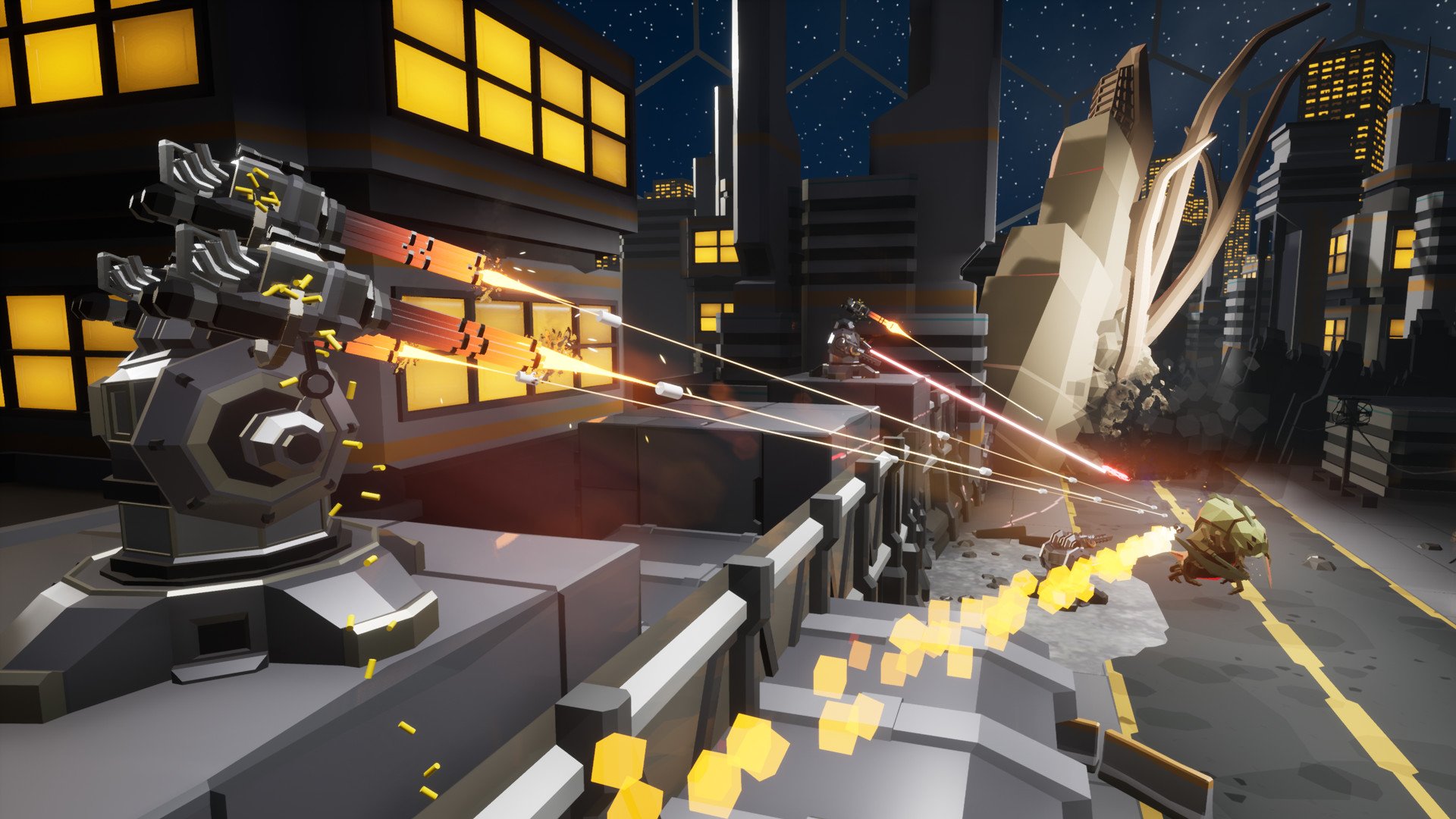My Contributions
As one of the three directors of Kite Shield Interactive, I have been a part of the game from inception. I’ve been at the heart of the game helping ideate and craft different parts of the game, from weapon, and enemy types, game mechanics, the look of different things, as well as providing references to different media to help mould the game visuals and game audio into what it is.
Game Design
Along with the other Designer on the project, I helped to form the foundations of the game which we continue to build upon, and have been part of many aspects typically considered more specialised parts of Game Design, as I explore below.
Systems Design
Throughout the project I have helped develop many of the different mechanics and systems in the game.
On this project, it is typical for me to discuss a system or mechanic with the other designers, and when we settle on a direction I write it up in the game design document.
For those mechanics or systems that are especially complicated or of high importance, I draw up a diagram to show the logic of how it works.
For those mechanics or systems that have a large impact on other mechanics or systems I draw up a seperate diagram to show how it may influence them to show how we must consider the iteraction between systems.
Level Design
On this project I have been the main level designer, building in excess of twenty levels (some alternate versions of others). The level design for this game is fairly basic, in that it is a tower defense game where the player is manipulating the field, rather than being in the action as would be the case for an RPG or Shooter.
The initial design for the game had the game as a sidescroller where enemies moved right to left, and had one main playpath, which meant designing for less depth, and was initially a challenge for me, as I typically design with first or third person RPG type layouts in mind. The game has grown from its initial design, but generally the enemies still move from a spawn point to a goal, and do not have complicated pathing.
The level design has expanded to build out the foreground and background of city levels, but for the most part, these areas are still aesthetic and not integral to gameplay.
Some of my experience in building the different levels of the game has been in determing what kind of enemies to spawn on what levels and some balancing of difficulty through the use of datasheets we have made outside of engine and imported.
*It should be noted that the other designers sometimes do their own pass on levels, to change lighting and or add in extra elements as the game evolves.
Narrative Design
I have created the majority of the narrative for the game, and helped to developed its ‘feel’ especially through plotting out arcs of player interaction the player can choose to engage with.
These character interactions primarily occur within the office level of the game. Likewise I have tried to build narrative into the tower defense levels, this includes standard things, such as having battle damage on the field where enemies have landed or broken through, and including snippets of story into the contracts/missions that the player takes.
Writing
Tied directly to narrative design is of course the writing. I have written the majority of character interaction, the contract descriptions, and in game cinematics to bring continuity to the game.
In this project, the majority of the writing has been outside the project inside spreadsheets, that we then import into the engine as datasheets. Certain elements have been written in the engine e.g. the contract descriptions are string fields you can fill out in their widgets.






